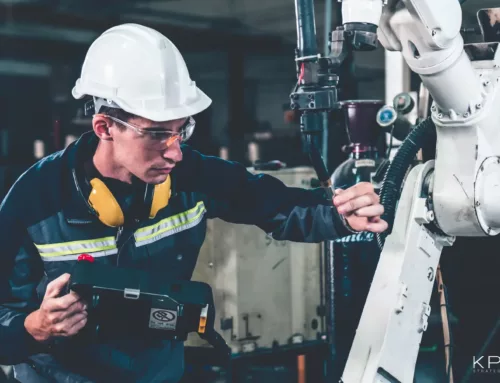Tired of plateaus and incremental improvements? As a leader or change agent, you likely crave more profound, game-changing results. Enter Kaikaku, the Japanese philosophy of radical organizational transformation. Unlike gradual Kaizen improvements, Kaikaku is about fundamentally overhauling core systems and processes to achieve breakthrough performance. If you’re ready to challenge the status quo and drive significant, lasting change, you’re in the right place. Let’s explore the essence of Kaikaku and how to harness its power.
Main Takeaways From This Article:
Kaikaku is about radical, breakthrough change: Unlike the gradual improvements of Kaizen, Kaikaku focuses on fundamentally overhauling core systems and processes to achieve significant and rapid performance leaps. It’s about challenging the status quo for substantial impact.
- It’s a vital complement to Lean: While Lean emphasizes continuous improvement through Kaizen, Kaikaku provides the engine for transformational leaps within a Lean framework. It allows organizations to break free from incremental progress and achieve significant advancements.
- Kaikaku requires a different mindset: Embracing Kaikaku involves a willingness to discard old methods, think innovatively, challenge limitations, and act decisively. Hirano’s Ten Commandments underscore this shift in thinking and focus on people-driven solutions over purely financial investments.
- There are different types of Kaikaku: Projects can range from implementing existing innovations locally to pioneering entirely new methodologies globally. Understanding these different types helps organizations identify the appropriate approach for their specific needs and context.
- Sustaining Kaikaku requires structure and tools: While Kaikaku initiates significant change, maintaining its benefits requires ongoing effort and the right tools. Platforms like KPI Fire can provide the necessary structure for managing, monitoring, and sustaining these large-scale transformations.
What Is Kaikaku?
In the realm of Lean principles, Kaikaku distinguishes itself as the driver of radical change. Directly translating from Japanese to mean just that, it moves beyond the gradual refinements of Kaizen to enact significant, disruptive transformations within an organization. However, this disruption isn’t random; Kaikaku employs a structured methodology to strategically redesign core processes, aiming for substantial and rapid improvements in performance. It demands a fundamental re-evaluation and redesign of how the organization operates.
Kaikaku’s Role in Lean Manufacturing Principles
Kaikaku holds a pivotal position within Lean manufacturing, complementing its core tenets of efficiency, waste elimination, and continuous improvement. While Lean often progresses through the steady, incremental steps of Kaizen, Kaikaku provides the engine for transformational leaps. It’s the principle that empowers organizations to transcend gradual progress by boldly questioning and redesigning fundamental operational systems.
By challenging the established norms, Kaikaku unlocks the potential for rapid and significant improvements that go beyond the scope of continuous, small-scale adjustments. Consequently, it’s an indispensable element for organizations striving for substantial and accelerated progress in their Lean implementation.
Kaikaku vs. Kaizen: Radical Change vs. Continuous Improvement
While both Kaizen and Kaikaku are vital to Lean, they represent distinct approaches to improvement. Kaizen focuses on continuous, incremental improvements implemented daily, fostering a culture of ongoing refinement. In contrast, Kaikaku emphasizes radical, one-time changes executed within a limited timeframe to achieve significant breakthroughs. Think of them as Yin and Yang: Kaizen for evolutionary progress and Kaikaku for revolutionary leaps that often set the stage for subsequent Kaizen efforts by breaking existing norms and standards. The primary difference lies in the magnitude and speed of change, with Kaikaku aiming for immediate, substantial impact.
Kaikaku in Action
Consider the implementation of a new enterprise resource planning (ERP) system. The Kaikaku phase is the actual rollout and cutover to the new software, representing a radical departure from the old way of managing resources. Following this disruptive change, Kaizen comes into play through ongoing staff training, system optimization, and continuous refinement of processes to maximize the ERP’s benefits.
Essentially, Kaikaku initiates significant change, while Kaizen ensures its sustainability and fosters further evolution. These approaches are not mutually exclusive but rather complementary. Kaikaku often sets the stage for long-term improvement, with Kaizen building upon the new foundation through continuous, incremental enhancements. Both require engaged teams and a commitment to practical progress.
Four Different Types of Kaikaku Projects
Kaikaku projects can vary significantly, depending on whether an organization is adopting existing innovations or pioneering entirely new ones. Companies can apply Kaikaku at both local and global levels, either by implementing established methods or by developing completely new solutions.
Here’s a breakdown of four distinct types:
- Locally Innovative Implementation: This involves adopting a widely accepted industry solution that is new only to the organization. It allows for modernization without the need to “reinvent the wheel.” For example, a manufacturer introducing automated material handling to streamline workflows, even though the technology is already common in the industry, is an example of Locally Innovative Implementation.
- Locally Innovative Methodology: This type of Kaikaku involves implementing industry-standard methodologies that the organization hasn’t used before. This helps achieve more efficient operations by leveraging proven practices. An example is a factory adopting Lean Six Sigma for process optimization, following the success of other manufacturers that have already embraced it.
- Globally Innovative Implementation: Here, a company pioneers a completely new solution, introducing it to the entire industry and setting new standards. This type of Kaikaku disrupts existing norms and creates a new way of doing things. Tesla’s direct-to-consumer vehicle sales model, which eliminated the need for traditional dealerships and disrupted the auto industry, is a prime example.
- Globally Innovative Methodology: This involves organizations developing entirely new production theories that influence industry-wide practices, fundamentally shifting how businesses operate. These innovations reshape how entire industries function. Toyota’s Just-in-Time (JIT) system, which revolutionized manufacturing and supply chain management by reducing waste and improving efficiency, is a classic example.
The 10 Commandments of Kaikaku
Using Kaikaku is like setting off an explosion in the workplace. It’s revolutionary. It breaks existing paradigms and throws out old ways of thinking. It’s focused on achieving radical improvement over a short time period.
A good place to start understanding Kaikaku is with Hiroyuki Hirano’s Ten Commandments of Kaikaku:
- Throw out the traditional concept of manufacturing methods.
- Think of how the new method will work; not how it won’t work.
- Don’t accept excuses and don’t accept limits.
- Totally deny the status quo, be ready to start new.
- Don’t seek perfection. A 50% implementation rate is fine as long as it is done on the spot.
- Correct mistakes the moment they are found.
- Don’t spend money on Kaikaku.
- Problems give you a chance to use your brains.
- Ask “why” five times.
- Ideas from ten people are better than one person’s knowledge.
The seventh commandment of Kaikaku is important: “Don’t spend money on Kaikaku.” Kaikaku isn’t about buying lots of new, high-tech machines and equipment. Kaikaku is about a new way of thinking and a new way of doing things. For example, by redesigning a product, a step in the manufacturing process might be eliminated.
The point is that good ideas deliver more value than spending lots of money. That’s why more than half of the Ten Commandments of Kaikaku are people-oriented. They are about freeing people to use their experience, knowledge, and creativity to come up with new ideas and better ways to get things done.
Benefits of Kaikaku on Production Systems
Kaikaku offers organizations a way to achieve transformational change that delivers long-term competitive advantages. By fundamentally rethinking and redesigning processes, Kaikaku enables organizations to make significant leaps in performance.
- Drives Large Scale Changes: Unlike incremental changes, Kaikaku delivers major performance leaps in quality, efficiency, and cost reduction. It involves a radical overhaul of existing processes, which can lead to dramatic improvements that are not possible with gradual adjustments. For example, a company might completely redesign its factory layout to optimize material flow, resulting in a significant reduction in production time.
- Eliminates Waste & Increases Efficiency: By radically redesigning processes, Kaikaku helps eliminate non-value-added activities and reduce waste in operations. This streamlining of workflows and removal of bottlenecks leads to increased efficiency and productivity. A real-world example is a manufacturer implementing a new production system that reduces excess inventory and minimizes waiting times, thereby improving overall operational efficiency.
- Strengthens Competitive Advantage: Companies that successfully implement Kaikaku gain a strategic edge by improving agility, innovation, and responsiveness to market demands. The ability to quickly adapt to changing market conditions and customer needs allows these companies to outperform their competitors. For instance, a company that adopts Kaikaku principles might be able to bring new products to market faster than its rivals.
- Accelerates Digital & Technological Adoption: Kaikaku often involves integrating new technologies, automation, and smart manufacturing tools to future-proof operations. This adoption of advanced technologies can lead to significant improvements in productivity, quality, and flexibility. An example is a factory that implements robotic systems to automate assembly processes, increasing output and reducing errors.
- Lays the Foundation for Continuous Improvement: Kaikaku creates a new baseline for operational excellence, allowing Kaizen (continuous improvement) to fine-tune processes over time. By establishing a more efficient and effective system, Kaikaku provides a platform for ongoing, incremental improvements that further enhance performance. This combination of radical change and continuous improvement ensures sustained success.
Sustaining Large-Scale Transformation with KPI Fire
Kaikaku is critical for organizations seeking long-term competitiveness, efficiency, and innovation. By driving large-scale changes, eliminating waste, and accelerating technological adoption, Kaikaku enables companies to achieve significant performance leaps. This transformative approach strengthens competitive advantages by improving agility, innovation, and responsiveness to market demands, while also laying the foundation for continuous improvement through Kaizen.
However, sustaining such radical transformations requires robust tools and methodologies. KPI Fire provides the necessary structure with structured workflows, real-time visibility, and performance tracking to ensure these large-scale initiatives stay on course. By offering a centralized platform to manage and monitor progress, KPI Fire helps organizations maintain focus, accountability, and alignment throughout the Kaikaku process. This ensures that the initial momentum of the transformation is not lost and that the benefits are fully realized over the long term. Request a Demo to see how KPI Fire can support your radical change initiatives.




